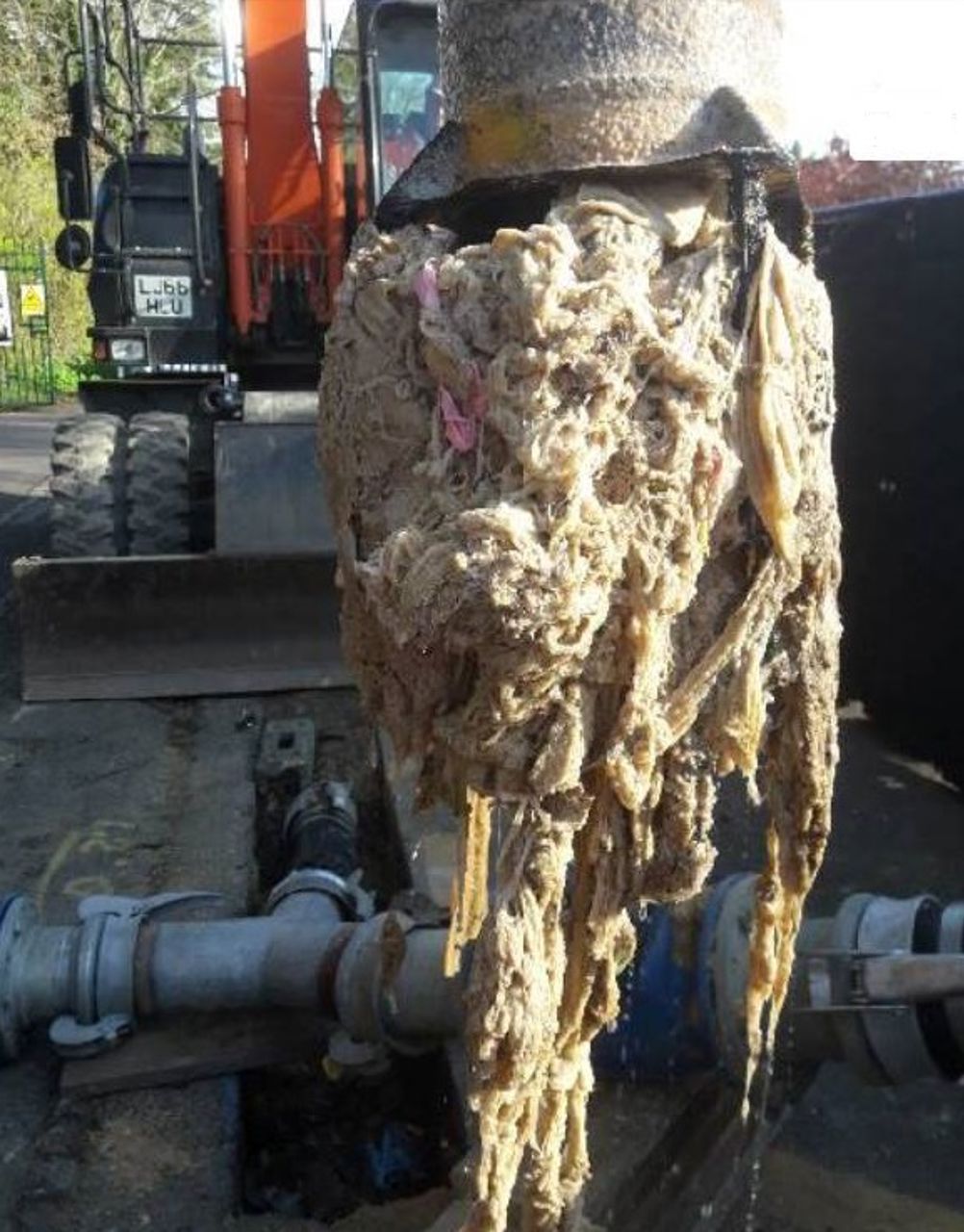The fight on fatbergs is one that requires increasing attention. Comprising a combination of fats, oils and grease congealed to a mesh of wet wipes and other plastic sanitary products, fatbergs are providing water companies with a major headache by causing major blockages to and damaging sewer networks.
Indeed, they have become a particularly prolific problem in urban areas around the world as population densities continue to rise, with wasteful sanitation and disposal activities placing unprecedented pressures on sewer systems that were built in less populous eras.
According to Unblocktober, a campaign to improve the health of drains, sewers, watercourses and seas, almost half (48%) of UK people have flushed wet wipes, while the same number of individuals pour fats, oils and grease (FOG) down their drains.
The results of these poor practices are shocking. In 2017, for example, a monster fatberg was discovered in Whitechapel in London, weighing 130 tonnes and spanning 250 metres (equivalent to the length of two and a half football pitches).
If left undiscovered and untreated, fatbergs can lead to serious problems such as foul waste flooding, pollution and excavation and repair works to both networks themselves and the surrounding areas, damaging roads and other vital infrastructure.

Further, the costs of clearing can be immense for water companies. Scottish Water states that it experiences as many as 100 blockages a day that cost £7 million annually to deal with, while Thames Water spends £18 million every year clearing 65,000 blockages from its sewers in London and the Thames Valley area.
Inside innovative pump technologies
Fatbergs are not exclusively a UK issue. Indeed, they are becoming a growing problem for many economies globally.
In Australia, Unitywater (responsible for water supply and sewage treatment services to much of South East Queensland) uncovered the largest fatberg in its history in August 2022. In the United States, meanwhile, the City of Houston, Texas revealed that four million linear feet of sewer lines had to be cleaned to remove FOG and other debris in the financial year 2021–2022, costing US$6.7 million in maintenance.
It is an issue that is garnering increasing amounts of attention on a global scale, with traditional methods of clearing fatbergs proving to be highly inefficient in dealing with the scale of the problem today.
“Large fatbergs typically require person entry to the sewer to dig them out,” explains Stephen Williams, product manager at British firm Southern Water.
“If you jet them with high pressure water you can clear it from one area, but may move it to another by letting it flow away and perhaps reform elsewhere. We also have tankers that work in combination to liquify fatbergs, but these are again very costly… both in monetary terms and time.”
Thankfully, several innovative solutions have been developed that are proving to be more successful in combatting the problem, particularly in the field of pumps. Lanes Group, for example, leverages pumps as a means of conducting critical repairs and maintenance work on pipes damaged by fatbergs.
“Powerful pumping systems are required to generate the level of throughput necessary to effectively redirect the flow within a public sewer pipe, with sufficient standby capacity available to account for peaks and variable flow rates,”
Larkin, part of the company’s marketing team, explains. “The machinery we use is compact enough to fit into compact spaces, with skilled engineers required in case the process is interrupted by solid debris and other hazards.”
In several regions, pumps have also been upgraded to ensure they can handle harmful pump-clogging materials that have proven to shut earlier versions down.
Xylem, for example, has developed its unique Flygt N-technology non-clog impeller to prevent the continued build-up of solids that can occur in conventional wastewater pumps.
Specifically, this innovative self-cleaning technology has served to avoid unscheduled maintenance, costly downtime and serious sanitary sewer overflows.
Further, some pump solutions are being designed to specifically prevent fatberg build up in the first instance. Seko stands as one such example, having developed a range of automatic dosing systems that periodically dispenses an enzyme solution directly into commercial kitchens, working to break down fats before they can build up and cause a blockage.
Education is equally important
Indeed, it’s clear that the variety of innovative, powerful pump technologies are helping to turn the tide on sewage blockages by better preventing and clearing fatbergs.
However, it is important that water companies pursue several avenues and develop a multifaceted strategy in mitigating the effects of fatbergs, with public awareness and education campaigns being a vital component.
Here, several important initiatives are taking place. These include the previously cited Unblocktober – the world’s first month-long national campaign and awareness month run by Lanes Group that is aimed at improving the health of drains and sewers.
Further, water companies themselves readily run awareness and education campaigns.
Thames Water, for example, runs an annual ‘Bin it – don’t block it’ campaign, while Southern Water recently rolled out a blog series aimed at expanding knowledge of the implications contributing to the poor health of sewers and drains.
“Customers whether business or domestic are generally keen to prevent pollution, but sometimes don’t realise how simple things like pouring the fat from a roast dinner down the sink or flushing a wet wipe can have such a big impact,” Williams affirms. “Our blog series aims to bridge this gap and improve understanding.”
Indeed, global corporations are also supporting these efforts. Last year, for example, a Lego Ideas project put the spotlight on fatbergs through a 360-degree underground cutaway display and play set, starring the dauntless members of a fatberg removal team at work.
A combination of tools will continue to need to be leveraged to better combat and prevent the threat of fatbergs as the problem both persists and grows, with cooking fats often being a major issue. Undoubtedly, public awareness needs to improve. Yet in those instances where the message doesn’t get through, today’s increasingly innovative pump technologies will serve to address the challenges of fatbergs more effectively than ever before.

This article was originally published in the January/February 2023 issue of World Pumps. Click here to read the full issue.






